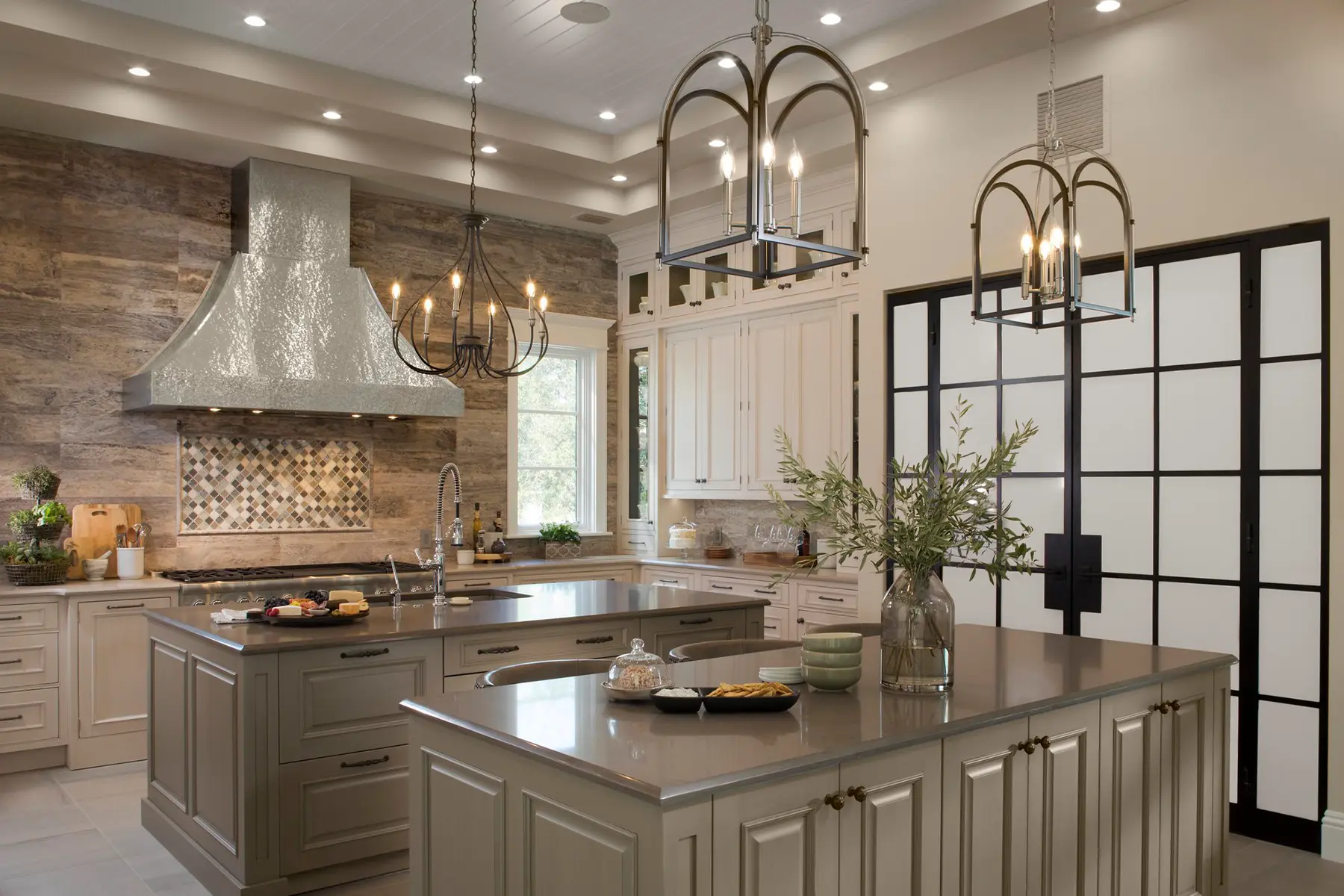The Most Popular Home Design Styles Explained
Home design style is a direct reflection of lifestyle and who we are. Are you a minimalist, needing clean lines and bare simplicity? Are you a maximalist, layering lots of everything—color, texture, form? Some of us need touches of the past while others of us live on the cutting edge of what’s new and coming. Whatever your style, it has a name, and chances are, you’ll find it among these popular home design styles.
Traditional Style

History is the essence of traditional style. It celebrates the timeless classics of prior centuries. It’s one of the most popular home design styles because it leaves plenty of room for family heirlooms, antique finds and quality reproductions. Many of the period names are most likely familiar—from Jacobean and Queen Anne to Chippendale, Hepplewhite and Victorian, for example.
Characteristics of traditional style are comfortingly familiar and predictable yet allow for a wide range of personal tastes. While furniture is beautifully rendered from select pieces of wood like walnut, mahogany, oak, cherry, and maple, the craftsmanship of each period creates distinctly identifiable lines and shapes. For example, the clean, tapered legs and delicate inlays of federal-style pieces have quite a different effect from the heavy, dark feet of the American Empire style or the ornate carving and curves of the Victorian era. The sheer variety throughout the periods allows for unique takes on traditional pieces.
Signature design elements for traditional design draw from all those time periods. Furniture is typically of quality hardwoods. Because colors and textures are often so rich in textiles like upholstery, drapes and carpets, walls and ceilings are often light colors or neutrals. Hand-pieced quilts, braided rugs, loomed fabrics, pewter, crockery and everyday objects from times gone by as well as primitive pieces all hold a significant place in traditional design.
Mid-Century Modern Style
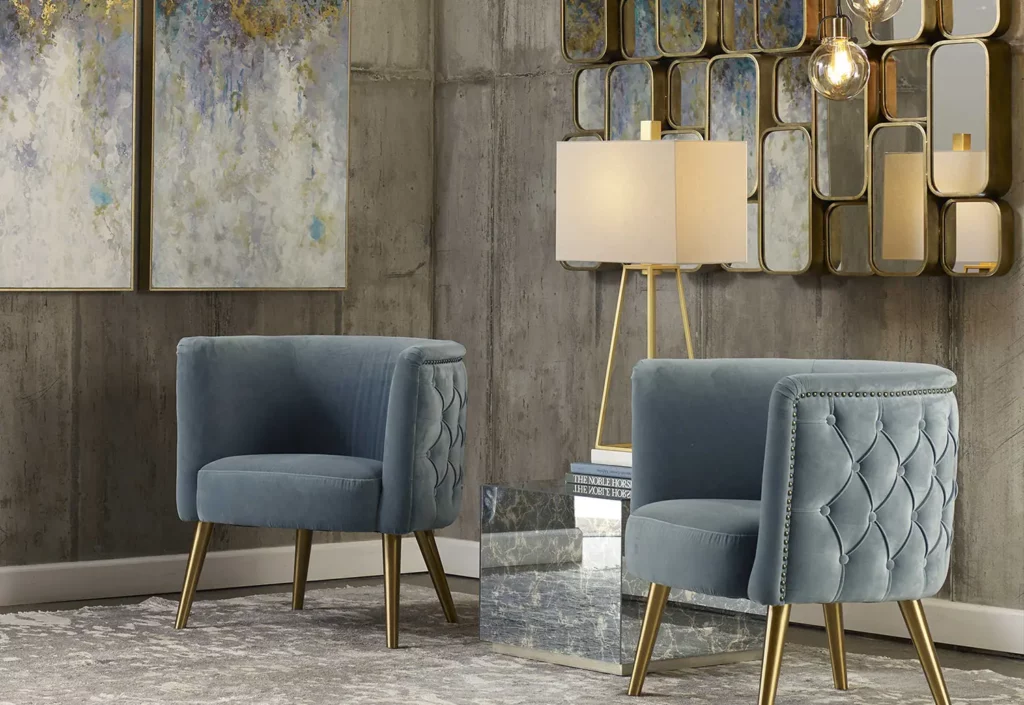
Mid-century modern style departed from the traditional following World War II. As the housing industry boomed, architects began experimenting with new materials—insulated glass, concrete and steel—bringing a blend of modern simplicity to the rapidly rising suburbs. Around the same time, prominent architects were exploring ways of integrating both indoor and outdoor spaces with indoor-outdoor living. The result was a style that celebrated the natural world, both emulating and giving access to it.
Characteristics for mid-century modern style made use of the new materials available to architects to open up homes. Walls came down, and spaces became more flowing with open floor plans. Insulated glass let windows become larger, spanning floor to ceiling, opening whole walls to a view outdoors. To keep lines and spaces clean, built-ins provided functionality and style. More, backyards became home to patios and pools, areas where families could relax and entertain outdoors.
Signature elements for mid-century modern design offer a highly livable mix of the natural world and the modern. Furnishings often feature natural materials like solid woods in teak, rosewood or walnut, for example, but pair it with leather, vinyl, glass or metal. Shapes are simple organic or geometric forms. Lines are clean, and the strong lines, boldly curved shapes, unusual angles, and splayed or tapered legs of the time are unmistakable. Vivid color, dramatic textures and geometric patterns are often used in contrast, juxtaposition a hallmark of mid-century modern style.
Contemporary Style
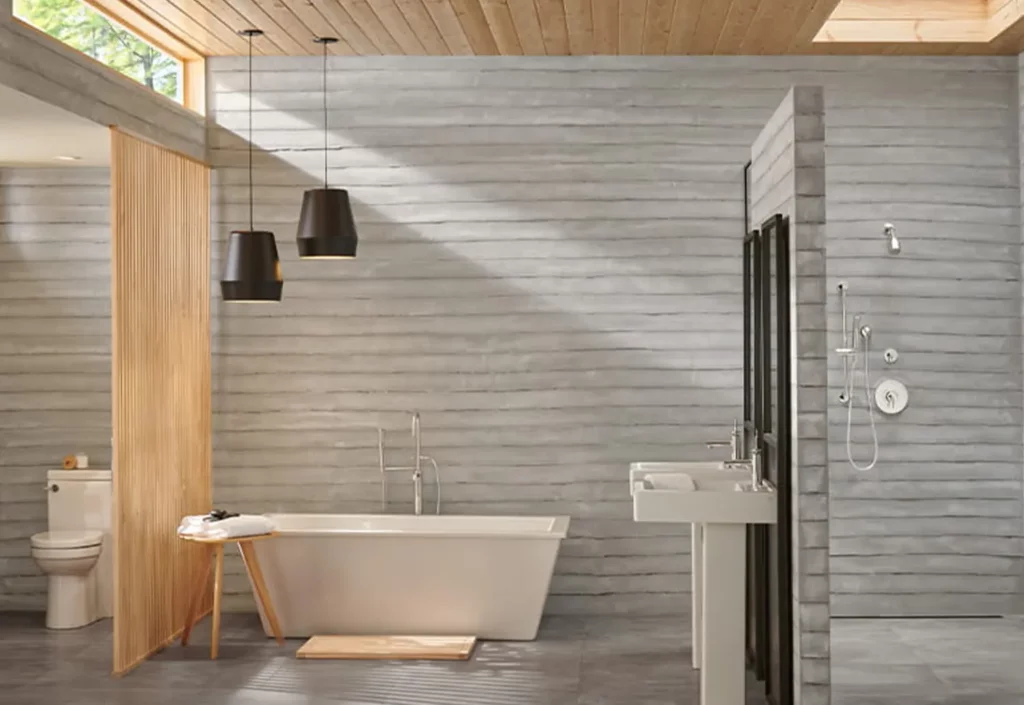
Contemporary design emerged in the 1970s, following mid-century modern. It styled itself as something new and continues to do so, drawing from any number of styles but always representing what’s newest. Contemporary style’s emphasis on clean lines, shapes and open spaces means a simple change can have a huge impact on the look and feel of your space.
Characteristics for contemporary style rely on a sense of spaciousness—even when the actual space may be small. It tends toward minimalism, where each piece that receives space is clean, unique and functional yet stylish and beautiful all on its own. Often, compelling contemporary design will integrate a wide range of design elements for both furnishings and architectural surroundings in just a few select pieces or features, but the impact is unmistakably contemporary.
Signature design elements for contemporary style often begin with light or neutral colors but add distinct details that are interesting yet bring a sense of calm perfection. A bank of windows may give light and focus while their simple moldings add a touch of uncluttered luxury, for example. Furnishings are comfortable yet have clear lines and shapes. Legs on furniture are often exposed, and textiles are used for maximum textural effect. Reflective materials like metal, mirrors and glass keep the look light and clean while small pops of color or black can serve as interesting contrast.
Industrial Style

Industrial style was the result of more traditional housing becoming difficult to find—or afford—in many metropolitan areas in the 1960s and 1970s. Instead, vacant warehouses and obsolete manufacturing facilities were overhauled and repurposed as loft apartments and spacious living areas. The bones of the places became chic features to highlight rather than conceal, and residences became prized for the signature signs of their industrial roots—high ceilings, rafters, enormous windows, brick walls and exposed ductwork or plumbing, for example.
Characteristics for industrial style center on the raw and rustic, creating stylish living areas for the present while retaining the signs of a working past. Spaces are often open, with one living area flowing unimpeded into the next. Furniture and other design components like lighting or textiles need to be strong, weighty or striking enough visually to define the boundaries of a kitchen or dining area versus a bedroom, for example.
Signature elements for industrial design pull from the raw materials used in manufacturing and the heavy machinery and commercial spaces that made it all possible. Repurposed wood, brick, steel and dark metals are staples, and leather is an industrially traditional choice for many furnishings. As a theme, colors are somber shades with visual weight or neutrals with sufficient texture and presence that can lighten the space. Overall, the look and feel are functional and sturdy.
Modern Farmhouse Style
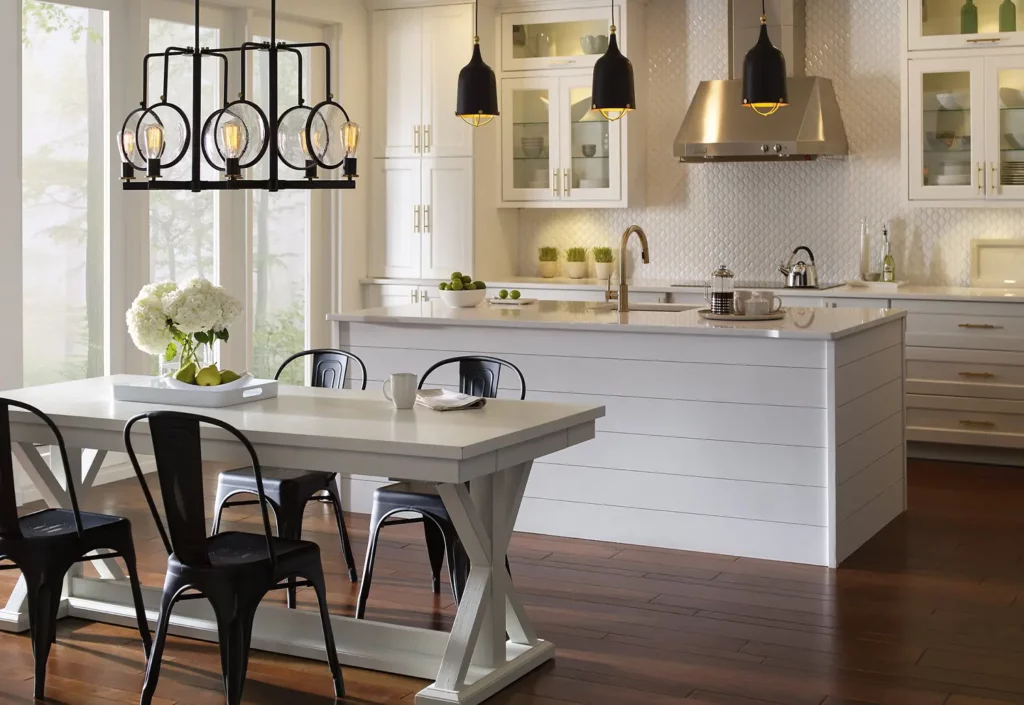
Modern farmhouse style has gained recognition as its own style in the last decade. While retaining many of its cues from the traditional farmhouse style, it’s allowed designers and homeowners to incorporate more updated or modern touches. Modern farmhouse retains the simple, welcoming feel of a rural home while trading some of the rustic feel for more chic elements.
Characteristics for modern farmhouse style work together to create cozy yet uncluttered living spaces. They start with many of the same principles that created traditional farmhouse style. Homes were utilitarian but comfortable, with landowners doing much of the building, repairs, updates and additions themselves with materials that were readily available. So, farmhouses were often straightforward homes with open rooms and sturdy yet comfortable features and furnishings that could serve a family. Modern farmhouse lets you keep that feel but with more sophisticated finishes and craftsmanship, for example, to suit your own personal tastes.
Signature design elements for modern farmhouse style keep farmhouse favorites like stone fireplaces, exposed wood beams, barn doors, wide plank flooring and stone floors. Open shelving and plenty of utilitarian cabinetry are as essential as roomy tables, freestanding tubs and the instantly recognizable farmhouse sink. Neutrals are still favorites for the color palette, with a nod to agriculture, greenery and plants to deliver pops of color.
Transitional Style
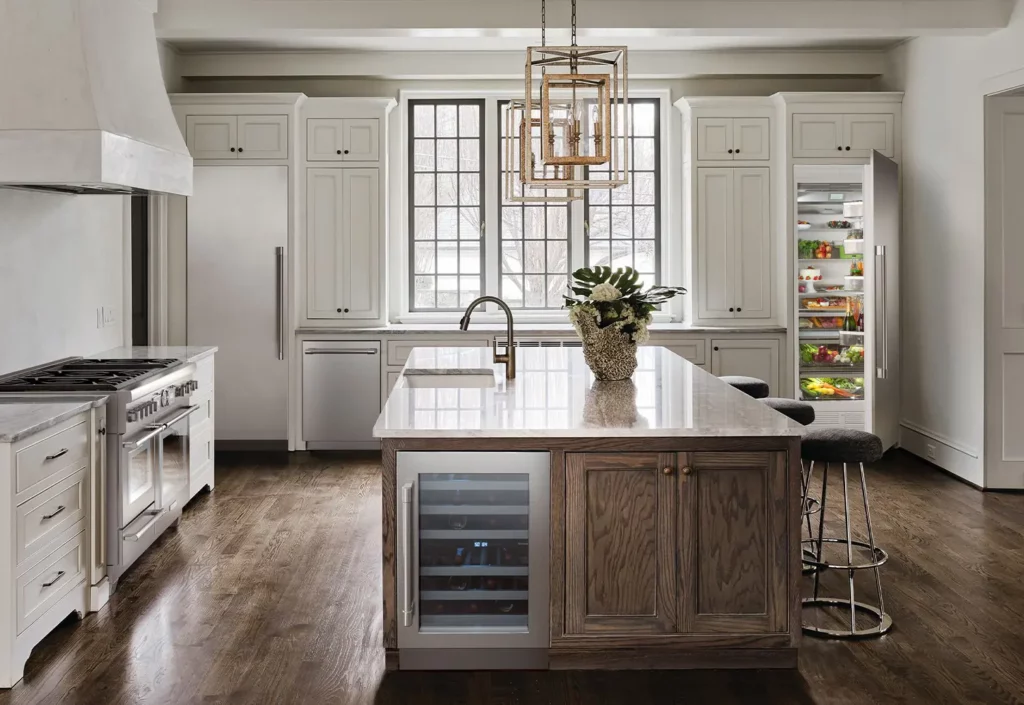
Transitional style has served as a more relaxed answer to the spareness, extremes and minimalism of modern design since the 1950s. Many designers describe it as a style that allows the best of both traditional and contemporary design, without the fussiness of the former or the starkness of the latter. Instead, transitional style begins with sleek lines and curved silhouettes but softens them with traditional detailing that adds elegance and a sense of luxury.
Characteristics for transitional style work together to bring a cohesive look to a mixed selection of features and furnishings—often through repetition of common elements like color. Spaces are often simple, light, with walls a light wash or even a neutral fabric-clad texture. Transitional furniture has easy lines and curves but is comfortable and inviting, often unified through the color palette and layering. Finishing touches for a space usually include a striking chandelier or distinctive lighting and layered accents to create a sense of uncluttered depth.
Design elements for transitional design rely on neutral color palettes. An array of creams, for example, or grays or tans or whites can give an entire room a soothing, comfortable feel and include shapes or features that might otherwise seem not to belong. Textures tend to be organic and remain within the neutral palette—a neat gray tweed paired with smooth gray velvet or a curly boucle, for example. Layering is key, bringing softness, unity and interest to a space—a long organic weave rug, a chunky cotton throw, a nubby knit blanket, a woven cane chair or a folded linen blind, for example. Details like artwork or textiles can add finishing touches of muted complementary colors to enhance the neutral palette. For finishing touches, transitional style often relies on metallic accents in tones a bit warmer or softer than those used in contemporary style, for example.
How To Find Your Favorite Home Design Styles at Coburn’s
We all want to be able to pick and choose furnishings and architectural elements for our homes that look and feel like us. That’s why understanding home design styles is so important. Knowing your general design style provides a starting point in easily finding home furnishings and fixtures that you’ll love. To find your perfect starting point, take our Style Finder Quiz. Then, find your closest Coburn’s Kitchen & Bath Showroom, and schedule an appointment with one of our knowledgeable consultants to bring your style to life.
